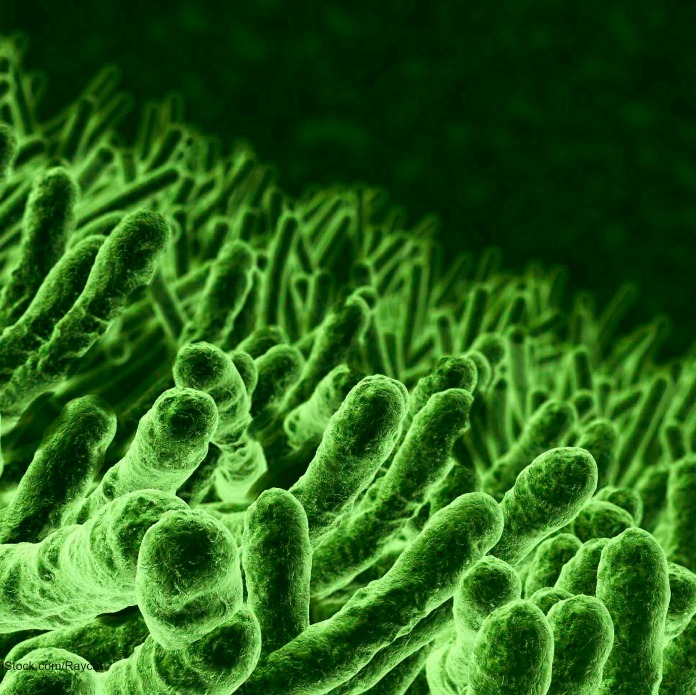Most people don’t know that raw flour can be a health hazard just like raw meat. In 2009, a multistate E. coli O157:H7 outbreak linked to raw Nestle cookie dough sickened at least 77 people in 30 states. Since pasteurized eggs were used to make that product, the flour was singled out as a possible culprit after months of investigation. The other ingredients used to make the cookie dough, including molasses, sugar, baking soda, chocolate, vanilla, and margarine, underwent pathogen kill steps during processing and were considered less likely sources of contamination in a study published in Clinical Infectious Diseases in 2011.
 Investigators never found E. coli bacteria at the plant that produced the cookie dough, or at the flour mills that supplied the flour for the product. No conclusive evidence was found in that outbreak investigation or in the resulting study that definitely labeled a culprit, but “contaminated flour remains a prime suspect for introducing the pathogen to the product,” according to the discussion in the study. Epidemiological evidence linked the outbreak to the product.
Investigators never found E. coli bacteria at the plant that produced the cookie dough, or at the flour mills that supplied the flour for the product. No conclusive evidence was found in that outbreak investigation or in the resulting study that definitely labeled a culprit, but “contaminated flour remains a prime suspect for introducing the pathogen to the product,” according to the discussion in the study. Epidemiological evidence linked the outbreak to the product.
Several cookie dough manufacturers started using heat-treated flour for their ready-to-bake food items after that outbreak. And consumers and food manufacturers were warned that foods containing raw flour should be “considered as possible vehicles of infection of future outbreaks of STEC or Salmonella infections.”
Now, another E. coli outbreak has been associated with raw flour. At least 38 people in 20 states are sick with E. coli O121 infections; half of them made something homemade with raw flour and some ate raw cookie dough before they got sick. As a result of this outbreak, General Mills has recalled more than 10,000,000 pounds of its flour that was marketed in several forms and under several brand names.
The recall notice on the General Mills web page states that Gold Medal Flour, Wondra flour, and Signature Kitchens flour is being recalled. No E. coli O121 has been found in any General Mills flour products or in the flour manufacturing facility. But half of those sickened reporting making something homemade with flour before they got sick, and some used General Mills flour.
Raw flour is just like any other raw ingredient; it has risks of pathogen contamination. When in the field, the wheat can come into contact with bird or animal feces, or contaminated irrigation water. It can also become contaminated during transport or processing. But because it seems so innocuous and is so dry, people don’t usually associate it with pathogenic bacteria.
When working with raw flour, consumers should take steps to protect themselves. Watch out for cross-contamination, which happens very easily with flour, since it can hover in the air and land on other foods that will not be cooked before they are eaten. Wash your hands well with soap and water after handling flour, and clean work surfaces and utensils thoroughly with soap and water after they come into contact with flour.
Most importantly, do not prepare any recipe that calls for raw flour and doesn’t use any type of heat, whether it’s cooking on the stovetop, in the oven, in the microwave, or on the grill. Many published recipes, from truffles to no-bake cookies, use raw flour. Be especially cautious if anyone in your family is in a high risk group, i.e. very young, the elderly, pregnant women, or anyone with a chronic illness or compromised immune system. Never serve them anything made with raw flour.
If you have experienced the symptoms of an E. coli infection, especially after you have eaten something made with raw flour, see your doctor. These symptoms include severe and painful abdominal cramps, nausea, mild fever, fatigue, and severe watery and/or bloody diarrhea. Symptoms begin three to four days after exposure to the bacteria, but can begin as early as one day or as late as seven days.
If an E. coli infection is improperly treated with antibiotics, it can develop into hemolytic uremic syndrome (HUS), which is a serious and potentially deadly complication. Young children are especially at risk for developing HUS. If anyone who has been experiencing E. coli symptoms starts having the symptoms of HUS, which include little or no urine output, fatigue, lethargy, a skin rash, pale skin, easy bruising, or jaundice, take them to a doctor immediately.




